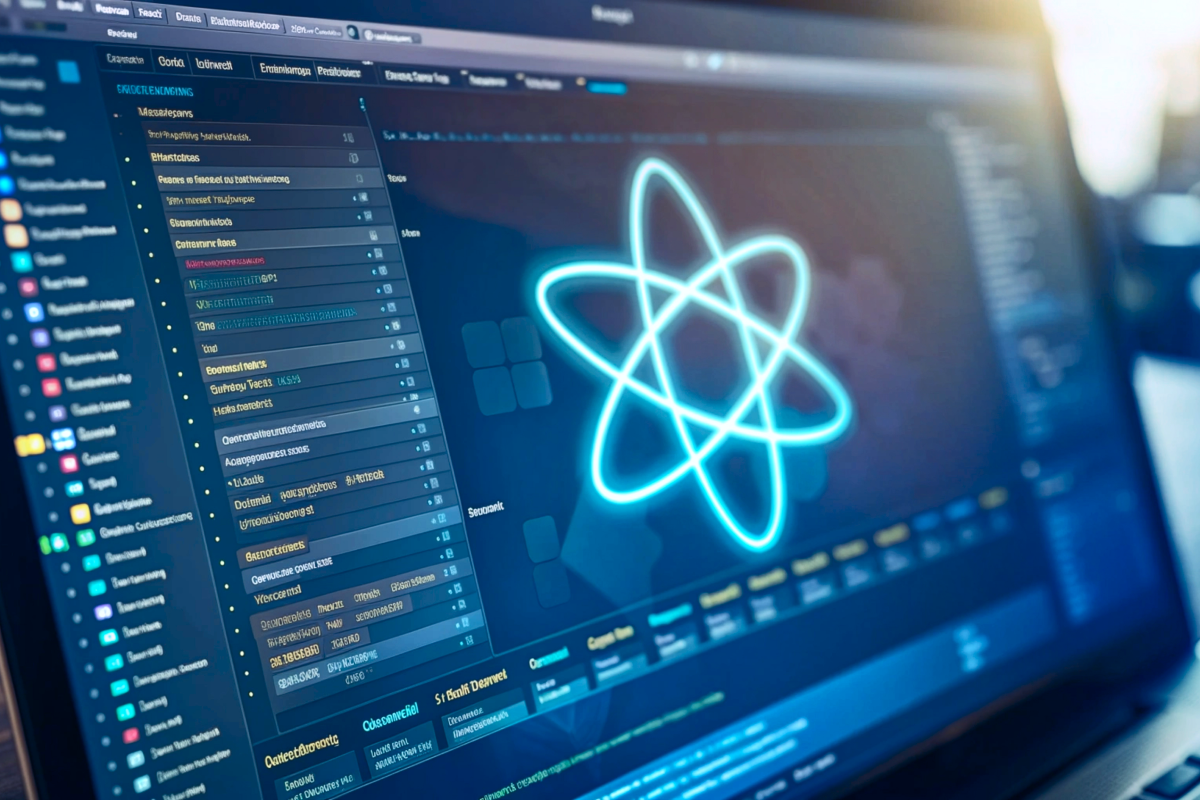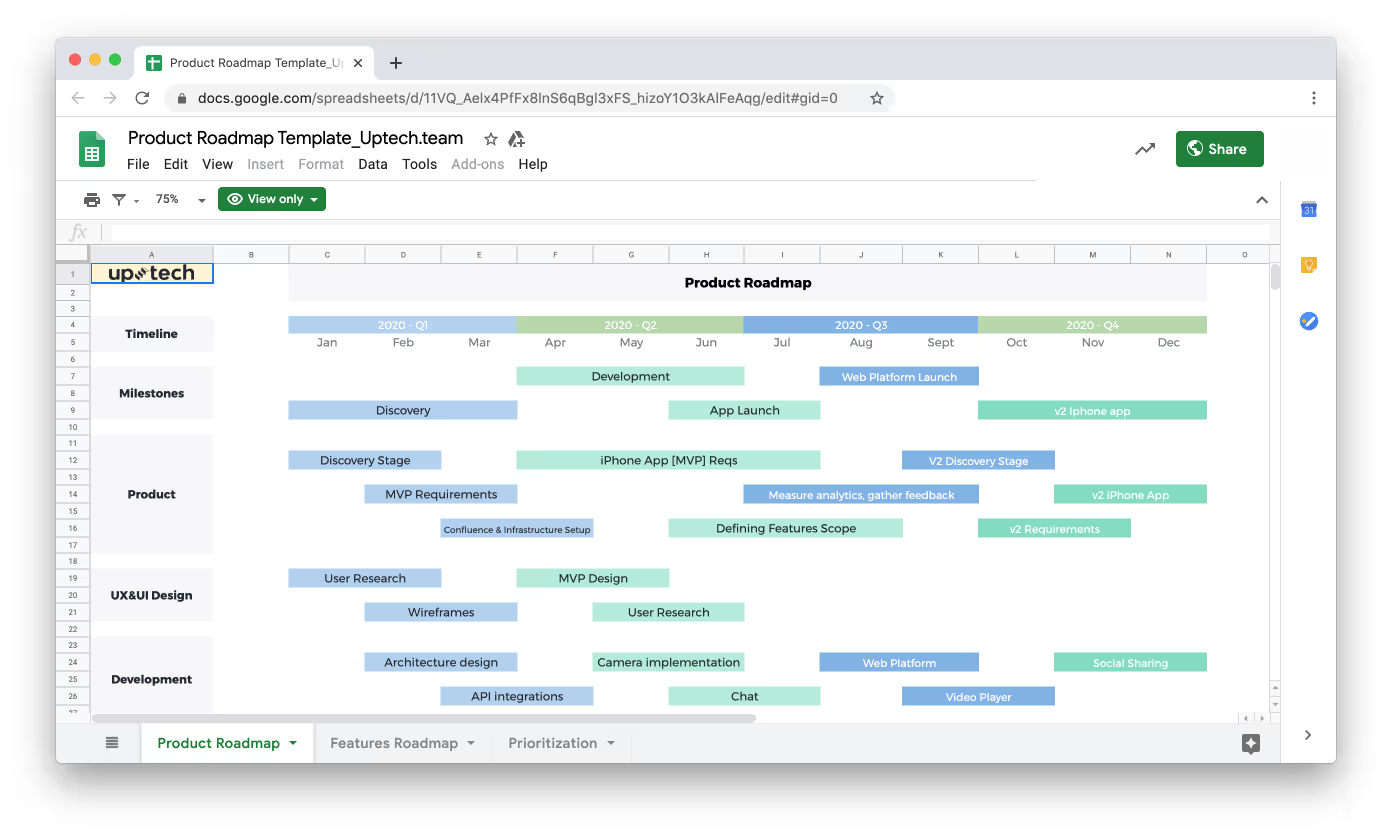All things AI have become a major part of various industries, especially in business, since the popular release of OpenAI’s ChatGPT. From simple question-answer formats, AI is now gearing toward AI agents that can handle tasks as efficiently as humans do.
About 64% of businesses expect AI to boost productivity, while 25% of companies turn to AI due to a lack of human resources. AI agents have advanced far beyond virtual assistants like Siri and Alexa; shown great use in drug discovery in healthcare, fraud detection in finance, and supply chain optimization in e-commerce.
So, to stay ahead of the competition, engage customers, and ultimately increase profits, you need to implement this new technology into your business. The question is: how do you create an AI agent?
This article is co-authored by Oleh Komenchuk, a Machine Learning Engineer at Uptech, and Andrii Bas, an AI expert and a founder of Dyvo.ai – an AI avatar generator. With a wealth of experience in Machine Learning, AI, and Computer Vision, we know exactly how to build an AI agent from scratch.
In this post, we’ll show:
- What an AI agent is and how it works
- The existing types of AI agents
- How AI agents differ from AI chatbots
- Two different AI agent development frameworks you can use
- When businesses actually need to build an AI agent and what benefits it brings them
Let’s begin.
What Is an AI agent?
An AI agent is essentially a computer program that can act on its own to achieve specific goals that you set. It’s an autonomous system capable of perceiving its environment, gathering relevant data, and making decisions to achieve predefined objectives. While human input may still be required, AI agents can largely operate without intervention.
Aside from context awareness, AI agents are capable of continuous learning and improvement through interactions with data, their environment, and human feedback.
Types of AI agents
AI agents can be categorized based on various principles, but the easiest way to classify them is by the complexity of their underlying processes in responding to requests or questions. Some operate based on predefined rules, while others rely on an external model to generate responses. Here are the main types:

- Simple reflex agents. These are the most basic types. They react to their environment based on pre-programmed rules.
- Model-based reflex agents. A step up from simple reflex agents, these build an internal model of their environment. Instead of simply reacting to triggers, they refer to their model before acting.
- Goal-based agents. These agents have specific goals in mind and actively work towards them. They can plan their actions and consider different options to achieve their objectives.
- Utility-based agents. These agents evaluate different options based on a predefined measure of “goodness” or utility. For instance, a recommendation system might consider various factors like user preferences and product popularity to suggest items you’d find most useful.
- Learning agents. As the name suggests, these agents can improve their performance by learning from experience. An AI spam filter that gets better at identifying spam emails as it sees more examples is a learning agent.
We can also group AI agents based on their architecture, which is basically how their components work together to process information and make decisions. Here are a couple examples:
- Hierarchical agents. These agents have different layers, with each level handling a specific task. For example, in e-commerce, a Level 1 agent might analyze user preferences, while a Level 2 agent would recommend products based on the data provided by the lower-level agent.
- Multi-agent systems. Instead of relying on just one agent, these systems use multiple agents that share a task. This is great for complicated tasks or speeding up responses. For instance, one agent might handle web searches, while another references its knowledge base.
AI agents can also be classified based on their environment. Unlike AI chatbots, which can rely on complete context from users, some agents may or may not have all the information they need upfront
Here are a few examples:
- Agents in fully observable environments. These agents can access all the information they need about their surroundings at any given moment. In our experience, common examples of this type of AI agents are typically used in portfolio management or healthcare applications, where agents can continuously pull data from stock websites or sensors.
- Agents in partially observable environments. These agents only have partial visibility, so they have to make educated guesses about missing information. A good example is an AI recommendation system that suggests products without knowing the user’s past preferences if browsing history is unavailable.
Examples of AI Agents in Action
AI agents can be grouped by their use case, which can range from simple tasks like managing smart home devices to more complex solutions like financial AI. Here are some popular use cases:
- Action agents. These agents are designed for general purposes that require some kind of “action.” For example, in an investment app we developed, we deployed an action agent to collect stock indices from the web. Then, another agent analyzes this data and turns it into valuable insights.
- Email agents. As the name suggests, these agents focus on sending personalized emails. You could use them for things like regular updates, newsletters, and lead nurturing.
- Robo-advisors. Commonly used in investment management, robo-advisors provide personalized financial advice without the need for a human advisor. For instance, Stripe recently introduced SDKs that help businesses use these AI agents to streamline transactions.
- Healthcare AI agents. These agents analyze medical data, diagnose diseases, and suggest treatments. A prime example is IBM Watson for Oncology, which recommends possible treatment options based on medical literature and patient data.
- E-commerce AI agents. AI agents can be used for various e-commerce tasks, such as inventory management, stock updates on your online store, and product recommendations. You can also use them to handle customer support.
- Lead management AI agents. These agents combine the capabilities of action agents, email agents, and more, depending on the industry. You can use them to identify hot leads, automate lead nurturing emails, and perform other tasks like sending follow-up emails, scheduling calls, and updating customer records.
These are just a few examples of how AI agents are used. We’ll dive into more use cases in the AI Agents: 5 Use Cases block.
How Do AI Agents Work?
Before building an AI agent, you need to know at least the basic working principles. By having a fundamental grasp of how they operate, you can better asses their capabilities and determine the resources needed for the development of an AI agent.

1. Perception
First, the agent collects data from various available sources, such as sensors (cameras or microphones), user input (text or voice commands), and databases.
In our example, the bot received a user request asking how many people performed a specific action — specifically, the number who bought running shoes with sports socks.
2. Decision-making
Once the agent gathers the data and understands the context of the query, it processes the information and decides on the best next step based on its goals, predefined rules, or learned models.
In our case, the AI agent used natural language processing (NLP) to understand the user's request. It then classified and organized the data based on learned patterns and analyzed it using statistical techniques and deep learning models.
Looking for a team to build a AI agent?
Transform your business with our Generative AI services and first-hand experience!
3. Action
Next, the agent performs the chosen action. In this example, it retrieves the sales data from the database. Afterward, it processes the data and uses NLP to generate a clear response that’s easy for the user to understand.
As you keep training and using your AI agent, it continuously improves. It looks at past results, updates its model, and uses the latest version to provide even better outcomes. This process is ongoing—ideally, you’ll feed it user feedback to make it more accurate and effective over time.
How to Build an AI Agent: 7 Main Steps
The idea of implementing an AI agent is indeed great. Now, what you need to do is to make it a real product that works for your business. Our team at Uptech uses seven key steps to build an AI agent, including:
- Define the agent's purpose and environment
- Gather, clean, and prepare essential data
- Assemble a skilled development team
- Select the right technology and tools
- Design the AI agent
- Test the AI agent
- Deploy and monitor the AI agent
Let’s dive into each step below.

Step 1: Define the task and environment
Before you start, identify what kind of environment you’ll put your agent in. Decide whether you’ll integrate it into an app, a website, or any other system. This way, you ensure the AI agent will be compatible with its surroundings once implemented.
After that, determine what tasks you want the agent to handle. These will vary depending on the industry.
When you work with us, we typically determine these requirements during the Disocvery phase. We’ll conduct interviews and consultations on platform integration, as well as the specific applications and capabilities you’re expecting.
For example, if you need an AI agent for investment data analysis, we’ll customize it to process financial trends and market insights. If it’s for customer support, we’ll optimize it to handle inquiries and automate responses.
This ensures the agent is built to meet your exact needs from the start.
Step 2: Assemble your development team
Next, you need to build your development team. They will be responsible for gathering the data that will be used for feeding your AI agent. The specific programming languages, platforms, and other technologies you’ll use will also depend on their skills and expertise.
Here’s who you’ll likely need on your team:
- Machine Learning Engineer
- Data Scientist
- Software Engineer
- UI/UX Designer
- DevOps Engineer
You can either hire these roles in-house or outsource the development work. Outsourcing can be a good option, particularly when your budget is tight, your internal team is small, or the skill sets needed don’t perfectly match your existing resources.
At Uptech, we offer flexible staffing solutions:
- Dedicated team: You get a fully managed team, including AI&ML experts, who work exclusively on your project. This model is best for long-term projects that require dedicated attention and expertise.
- Team extension: In this model, you augment your existing team with a couple of specialists you need. Ideal for projects that require specific expertise or additional resources temporarily.
- Project-based model: You can complete your project from start to finish with our team of experts. Suitable for clients with defined project requirements and deadlines.
Whether you require a dedicated development team or support to fill specific skill gaps, we'll curate a shortlist of candidates based on your project’s complexity and budget requirements. You’ll then have the opportunity to interview them, and we’ll finalize the best fit for your team.
Step 3: Gather data
Data is the lifeblood of any AI agent. Without quality data, your AI will be like a car without fuel—it simply won't run. The key is to gather data that is relevant, accurate, and abundant. There are several sources you can consider, including the following:
- Internal data. This includes data collected within your business, such as sales records, customer information, operational data, and financial reports.
- External data. This is data that you can obtain by purchasing datasets, partnering with data providers, or utilizing publicly available data.
- User-generated data. This includes data from your customers or users, such as social media posts, product reviews, or website interactions.
For example, if you want the agent to manage patient health records, you should gather relevant medical data. We applied this approach when we recently developed a proof-of-concept (PoC) for a medical records summarization chatbot. This AI-driven tool uses natural language processing (NLP) to extract and summarize key information from medical records.
If you want to learn more use cases of AI in healthcare, check out our article.
Step 4: Select your tech stack
There’s no one-size-fits-all tech stack, and yours will depend on your specific goals and the environment where your agent will be deployed.
Programming language
The programming language is the foundation of your AI agent’s code. In general, you want to choose your programming languages, such as Python and Java, based on the technology that you will use. To be more specific, you can employ the following technologies in your AI agent:
- Machine Learning. Learns from data to predict and uncover patterns.
- Natural Language Processing. Enables machines to understand and respond to human language.
- Computer Vision. Gives machines the power to see and understand the visual world.
- Robotic Process Automation. Automates repetitive tasks in digital systems.
Every AI agent is unique. Our experience in developing AI-based solutions, mobile apps, and other software products allows us to select the perfect tech stack for your project. And, we often blend several of them to ensure excellent performance in the AI agents we develop.
Scalability and maintenance
As your AI agent interacts with more people and collects more information, it will need to process and store this data efficiently. For small and medium businesses, we often recommend using cloud-based platforms. This way, our clients only pay for the storage space they need and can easily scale as their investment decisions change.
Additionally, as your AI agent evolves and new requirements emerge, you’ll need to be able to modify and improve its code. Our team always keeps up with market trends to anticipate any major needs in software. For every solution we develop, we provide post-deployment support to ensure that it remains adaptable and effective in the changing market.
Step 5: Design the AI agent
Work with your team to design the agent. In general, you need to decide about the agent’s build, how you will handle and process data, and consider user experience.
Agent architecture
Choosing the right architecture for your AI agent will define how easy it will be to maintain it in the future and how efficiently it can run. There are two general options that you can consider:
- Modular design. You’ll create multiple parts of your AI agent separately before assembling it into one working piece. This makes maintenance easier.
- Concurrent architecture. If you need the agent to run several tasks simultaneously, use a concurrent design.
If you are making an AI agent that handles conversations with the user, such as an AI chatbot, the architecture you choose might also affect your conversation flows.
We recommend a modular design when flexibility is important, such as when iterating on decision trees or conversation flows. This approach allows us to modify individual components without impacting the entire system.
On the other hand, if the AI agent needs to handle multiple conversations simultaneously, we may opt for a concurrent design to ensure seamless and efficient processing.
Data handling
Define how your agent will get data. For example, you can design a chat interface where a user can enter information for your agent to process. Similarly, determine how the agent will respond. For instance, you can set it to reply to a user or update a spreadsheet based on the processed data.
User experience
If you’re having your AI agent interact directly with users, design its appearance. Use buttons, colors, and text that reflect your brand. Don’t forget to add accessibility features, like text-to-speech and more.
We also recommend including a feedback mechanism in the AI agent. This way, users can freely provide feedback, which you can use to improve the system.
Step 6: Test the AI agent
Like any complex system, thorough testing is crucial for your AI agent’s success. Testing helps identify glitches, biases, or unexpected behavior in your agent. It also highlights areas where the agent’s interaction with users can be improved.
You can perform the following tests on your AI agent:
- Unit testing, which involves testing individual modules of the agent’s code to ensure they function correctly in isolation
- Integration testing to verify how different parts of the agent work together seamlessly
- Functional testing to check the overall functionality of the agent against its intended use cases
- Usability testing, which involves observing real users interacting with the agent and identifying any usability issues
Optionally, perform edge case testing to see the boundaries of your AI agent by feeding it unexpected or extreme inputs.
We’re fully equipped to handle these testing procedures. However, given the significant costs associated with testing, we adjust testing plans and recommendations based on the client’s budget and available resources. This allows for a balance between thorough evaluation and cost-effectiveness.
Step 7: Deploy and monitor your AI agent
The last step is integrating the AI agent with your existing systems and workflows. If it will handle sensitive data, make sure that you implement proper security measures to protect it and prevent unauthorized access.
To ensure that the AI agent performs at its peak, we provide a support window for regular monitoring. We track key metrics like accuracy, response times, and resource usage to detect performance issues. Additionally, we actively gather user feedback to understand interactions and identify areas for improvement.
What’s the Difference Between an AI Agent and an AI Chatbot?
AI chatbots and agents might have overlapping characteristics in some aspects, but they are different. Both can use Natural Language Processing to understand text and may rely on similar Large Language Models (LLMs) for their responses.
The key difference lies in their actions.

AI chatbots directly interact with the user either through text or voice. They can help you retrieve answers to questions and assist with some low-level tasks, but they cannot take independent actions.
On the other hand, AI agents can act autonomously. You can set them up with or without a user interface, since their goal is to complete the tasks you want them to perform.
2 AI Agent Development Frameworks
There are two primary paths to building an AI agent: developing it from scratch or leveraging existing frameworks. The best approach for your business depends on factors like budget, timeline, and required level of customization.
Let's explore each option to help you determine the best fit for your business.
1. Build an AI agent system from scratch
Building your AI agent from scratch allows you maximum control and flexibility over its functionality and design. This approach is ideal if you need to customize the agent for specialized tasks in your business.
However, it requires significant expertise in Machine Learning and Software Engineering. In addition to skill requirements, note that building from scratch consumes more time and makes the development process complex.
Pros:
- Full autonomy over the AI agent's functionality and design
- Develop AI agents precisely to your business needs
- Own the entire system, including the AI model
Cons:
- High requirements for technical expertise
- Development can be lengthy and resource-intensive
Who suits best:
- Businesses with substantial AI expertise, a large budget for development, and unique requirements that cannot be met by pre-built solutions.
2. Utilize existing orchestration frameworks
These frameworks provide pre-built components for common AI agent functionalities. They often leverage Large Language Models for core capabilities. Here are a few popular options:
- Microsoft Autogen: Known for its easy collaboration features and simplified agent building.
- LangChain: An open-source framework offering a modular architecture for your agent.
- LlamaIndex: Suitable for tasks related to information retrieval.
- crewAI: A paid builder platform with pre-built components and tools for building AI assistants.
Pros:
- Faster development due to pre-built components
- Less technical expertise is required
- Often more cost-effective
- Access to advanced LLMs
Cons:
- Dependency on third-party frameworks
Who suits best:
- Businesses with limited AI expertise, tight deadlines, or projects that don't require highly customized AI agents.
- Also suitable for those looking to explore AI capabilities without a significant upfront investment.
AI Agents: 5 Uses Cases
You already know what makes AI agents useful for your business, but seeing how others leverage them can still be inspiring. Businesses use various generative AI services to build custom AI agents that work effectively for their specific use cases.
Let's explore 5 key areas where businesses have applied their AI agent solutions to achieve goals.
1. E-Commerce AI Consultant
Businesses use AI in the E-Commerce space to track trends like emerging product categories and seasonal demand fluctuations. These AI agents can also recommend product assortments, pricing strategies, and inventory levels by analyzing sales data and customer feedback.
Value it brings:
- It optimizes customer experience by offering personalized recommendations to buyers.
- eCommerce AI consultants can automate inventory management, order processing, and other routine tasks.
- AI agents also provide data-backed recommendations on product assortment, pricing, marketing strategies, and customer segmentation.
Industries to apply:
eCommerce, logistics, wholesale, and distribution.
Real examples:
While there’s no standalone AI-powered product that fits this use case, Amazon’s machine learning algorithms serve as a classic example.
Its recommendation engine analyzes customer purchase history, browsing behavior, and product reviews to suggest relevant products, increasing sales and customer satisfaction. It also uses AI to predict product demand, optimize inventory levels, and prevent stockouts or overstocking.
2. Customer Service Agents
Many businesses implement AI agents to handle some of their customer service tasks, such as answering frequently asked questions, resolving simple issues, and guiding customers through complex processes.
Value it brings:
- AI customer service agents offer 24/7 availability, quick response times, and personalized interactions—all of which can enhance customer experience.
- Customer service agents automate routine inquiries and can handle customer interactions at scale.
- Businesses can also analyze customer interactions with the AI agent to identify trends, preferences, and pain points for better decision-making.
Industries to apply:
Banking, healthcare, travel, and retail.
Real examples:
A great example here is Capital One’s Eno, an AI in banking that helps customers with account balances, transfers, and transaction history. Another notable example is Amazon’s Alexa. While primarily known as a smart home device, it can also assist customers with order tracking, returns, product information, and even making purchases.
3. LLM-based AI Agents
LLM-based AI agents are an application of large language models that go beyond simple text generation. Like digital assistants, LLM-based AI agents can understand and respond to complex queries, execute tasks, and learn from their experiences. The difference is that they use a more advanced set of cognitive capabilities and can do more complex tasks such as interactive dialogue, problem-solving, and providing personalized assistance.
Value it brings:
- These agents can tackle more intricate problems and propose appropriate solutions.
- They can be used for research, like in drug discovery, development, and creating new products and services, driving innovation.
- In customer service, LLM-based agents offer personalized and empathetic interactions, leading to higher customer satisfaction.
Industries to apply:
- Healthcare, finance, education, marketing.
Real examples:
Many of the AI-powered chatbots on the market leverage LLMs as their foundation. Meanwhile, one notable example of these LLM-based AI agents is the GitHub Copilot, which can suggest code completions and generate code snippets for programmers.

4. AI Voice Agents
AI voice agents can understand, interpret, and respond to human speech, which helps offer a more natural and efficient communication channel. They are often used by businesses to enhance customer experience, such as when dealing with customer queries, sales, and other applications.
Value it brings:
- The voice generated by these agents sounds consistently professional, which can significantly elevate a company’s perceived credibility and trustworthiness.
- They are efficient and cost-effective for businesses, especially when dealing with high call volumes and common tasks.
- You can use AI voice agents for content creation, such as audio advertisements, product demos, and training materials.
Industries to apply:
Hospitality, marketing, customer service, education, entertainment.
Real examples:
Popular examples of AI voice agents include Google’s Gemini, Apple’s Siri, and Amazon’s Alexa. Many businesses also use AI-powered interactive voice response systems to route calls, provide information, and handle basic customer inquiries.

5. Roles-based AI Agents
A role-based AI agent is essentially an artificial intelligence program designed to perform specific tasks or functions within a defined context. In other words, it’s like assigning a specific job—a customer support representative, a personal financial advisor, or a marketing strategist—to the AI agent.
Value it brings:
- Roles-based AI agents possess knowledge and understanding of the specific domain or industry it operates in.
- The actions and responses of the agent are primarily focused on fulfilling the responsibilities associated with the role it has been assigned.
Industries to apply:
Roles-based AI agents can essentially be implemented in any industry.
Real examples:
One of the best examples of AI programs that show characteristics of a roles-based AI agent is ClickUp AI. It offers various roles or functions, such as writer, editor, or project manager. Each role is designed to perform specific tasks related to project management, like writing task descriptions, creating meeting agendas, or summarizing project progress.
Why It's Worth It To Build an AI Agent
While AI agents cannot replace humans in the workplace, they can indeed handle some basic human tasks with greater efficiency.
But what about your business? How does building your own AI agent benefit your team, customers, and profitability? We have analyzed quite a few cases.
Here are the key signs that indicate AI agents could benefit your business.
1. You want to improve your operational efficiency
Many businesses are plagued with repetitive tasks, such as data entry, invoice processing, and document management. Instead of letting your employees work on more important jobs, they waste time doing such. AI agents excel at handling these time-consuming loads.
You can let your AI agent access other data sources in your business. If you’re in retail, this might include your sales records and customer relationship data. Unlike humans, AI agents can train on this information more efficiently. They can also utilize these details more comprehensively when offering decisions.
2. You want to save costs
Shifting menial work to AI-driven processes can indeed save you some operational costs. However, AI agents can provide other avenues for cost savings depending on how you implement them. Here are some examples:
- Predictive maintenance of your equipment. You can install sensors on your equipment and have your AI agents track the changes and trends in the data fed back by the sensors. This way, you can see if some components need to be replaced early.
- Detecting fraud. Banks can also use AI to detect anomalies in financial data, which could likely indicate fraud.
- Inventory management. eCommerce businesses can effectively prevent stockouts and plan their logistical costs ahead of time by letting AI agents monitor and manage their inventory.
AI agents can handle these tasks at scale, a feat that would require considerable manpower if done manually.
Check how much AI cost in our blog!
Learn what factors make up the price and our expert tips on how to reduce the price.
3. You want to turn your data into insights
AI agents transform raw data into actionable insights by uncovering hidden patterns and trends. This capability empowers businesses to make informed, data-driven decisions. These intelligent assistants offer real-time recommendations, adapt to dynamic business environments, and optimize processes.
4. You want to add personalization to your service
You can make your services more personal by using AI agents that automatically analyze customer behavior and adjust in real time.
For example, you can create one that tracks what customers do on your website and changes what they see based on their interests. AI agents can also adjust product suggestions, pricing, or special offers to match each person’s habits.
Another example is AI agents managing inventory based on customer demand. If a product is selling quickly in one area, your AI can shift stock or recommend similar items to ensure availability and a smooth shopping experience.
Using AI agents this way makes your services feel more tailored and improves how you engage with your customers.
5. You work with big and complex data
If you have a data source that involves big data, like customer purchase history, website traffic patterns, or supply chain logistics, AI agents can help you process and analyze it efficiently. They can identify trends, detect anomalies, and generate insights that would be difficult to spot manually.
For example, in fintech, AI agents can detect fraudulent transactions by analyzing spending patterns and flagging unusual activities in real time. This helps prevent fraud before it impacts customers.
Investment giants like JP Morgan & Chase apply AI in that exact way, among other applications such as portfolio management and contract screening.
The Future of AI Agents
AI agents have the potential to change industries and redefine operational efficiency. By automating tasks, optimizing resources, and driving data-driven decisions, they offer significant savings on time and money. As technology continues to advance, we can expect even more sophisticated AI agents to emerge, revolutionizing the way businesses operate.
Ready to harness the power of AI agents for your business? At Uptech, we develop and implement custom AI solutions tailored to our clients’ specific needs. Let's build one for you, too. Reach out and have a talk with our expert team today.
FAQs
Can I create my own AI?
Yes. You can find an increasing number of tools and resources on the market to create your own AI agent. However, it’s necessary that you have some background or basic understanding of how AI works, even if you’re only starting with simple projects.
How to choose the right machine learning algorithm for my AI agent?
To select the right machine learning algorithm, it's important that you consider the problem type, the data you have in hand, your expected outcomes, and the complexity of the algorithm. Experimentation is key; try different algorithms and evaluate their performance to find the best fit for your AI agent.
Tip: You can always consult an expert developer to make the right choice.
What are the key steps in training an AI agent?
The steps to train an AI agent can be summarized as follows:
- Assemble your development team
- Gather and preprocess your data
- Select your tech stack
- Design your AI agent
- Test and improve your AI agent’s capabilities
Once these steps are completed, you can now deploy your AI agent into your chosen environment.
What is the cost of creating a complex AI agent?
The cost of building a complex AI agent depends on its framework and complexity. In general, custom AI solutions may cost between $6,000 to over $300,000, inclusive of development and implementation. If you are outsourcing, the actual cost of your project can be significantly higher or lower, depending on your chosen company.
What kind of data does an AI agent need to function?
An AI agent needs training data, including texts, images, videos, sensor data, and other structured data, during development. This training data should be directly relevant to your industry and application. Once deployed, the agent can also collect operational data, such as user interactions and environmental data, to improve itself.




















































































.avif)
















